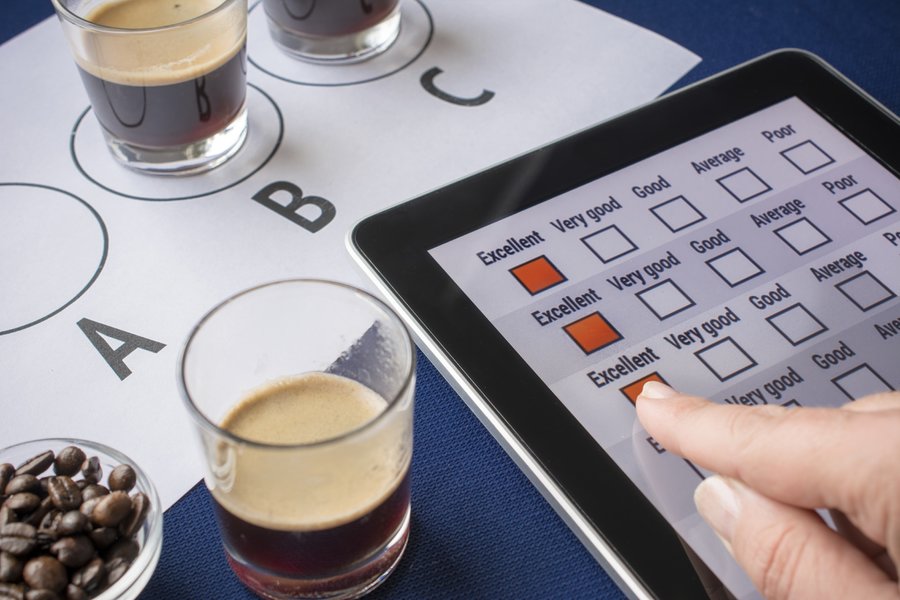ISO 13299 General Guidance for Sensory Profiling
The ISO 13299 standard provides comprehensive guidelines on sensory profiling, which is a systematic and objective approach to the description, evaluation, quantification, and specification of the sensory properties of food products. This service ensures that food manufacturers can consistently produce products that meet consumer expectations and regulatory requirements.
Sensory profiling involves multiple steps including sampling, preparation, and presentation; identification and selection of panelists; administration of tests to determine the attributes of a product; analysis of results from panelists; and statistical treatment and interpretation. This process helps in understanding the sensory characteristics that differentiate products within a category or among competitors.
The standard emphasizes the importance of selecting appropriate panelists, training them on standardized procedures, and ensuring consistency in test conditions to achieve reliable data. It also stresses the significance of using validated methods for attribute identification and quantification, which are crucial for accurate sensory evaluation.
For instance, when testing a new line of chocolate products, ISO 13299 would guide the process from selecting an appropriate panel consisting of trained individuals who can reliably assess sweetness, bitterness, texture, and aroma. The standard also provides detailed recommendations on how to present samples in controlled environments to avoid biases due to packaging or other extraneous factors.
The methodology is not limited to just chocolate; it applies across a wide range of food products including beverages, snacks, dairy items, and more. In the case of soft drinks, for example, the test could evaluate carbonation levels, sweetness intensity, and acidity. For fruit-based products like jams or jellies, attributes such as viscosity, color consistency, and flavor profile would be evaluated.
By adhering to ISO 13299 guidelines, food manufacturers can ensure that their products consistently meet quality standards. This is particularly important in competitive markets where consumers are increasingly demanding transparency regarding product ingredients and sensory qualities. The standard also supports regulatory compliance by providing a framework for conducting tests that meet international standards.
The process involves rigorous training of panelists to minimize variability introduced by human factors. Proper sampling techniques ensure that the samples accurately represent the product being tested. Controlled conditions, such as temperature and lighting, are maintained during testing to prevent any extraneous variables from influencing results. Statistical analysis is employed to interpret data objectively.
Understanding consumer preferences through sensory profiling allows manufacturers to innovate products that resonate with target demographics. For example, by identifying which attributes are most important to consumers, companies can focus their R&D efforts on enhancing those aspects of their products. This approach not only enhances product quality but also increases market share and customer satisfaction.
The standard is widely recognized in the food industry for its robustness and reliability. It has been adopted by major corporations and regulatory bodies worldwide to ensure consistency and accuracy in sensory evaluations.
Why Choose This Test
- Accurate and reliable data essential for regulatory compliance.
- Consistent evaluation of sensory properties across different batches or products.
- Identification of key attributes that influence consumer preference and acceptance.
- Supports continuous improvement in product quality through informed decision-making.
- Reduces variability due to human factors by training panelists rigorously.
- Ensures controlled test conditions for accurate results.
- Promotes transparency and trust with consumers regarding product attributes.
Quality and Reliability Assurance
The ISO 13299 standard is designed to ensure that sensory profiling tests are conducted in a way that guarantees high-quality, reliable results. This section will delve into the various aspects of ensuring quality throughout the entire process.
One critical aspect is the selection and training of panelists. Properly trained individuals who understand the nuances of sensory evaluation can provide more accurate assessments. Training includes not only technical skills but also ethical considerations to avoid bias in test results. For example, panelists should be familiar with how to handle samples without altering their condition.
Another key component is the standardization of test procedures. This includes specifying the type and amount of product used for testing, as well as the conditions under which tests are conducted. Standardizing these elements helps in replicating results across different batches or products consistently. Additionally, it allows for easier comparison between different samples.
Controlled environments also play a significant role in ensuring quality. Temperature, humidity, lighting, and even seating arrangements can affect how panelists perceive the product. Ensuring that these factors are kept constant minimizes variability and enhances reliability of the results.
Finally, statistical methods used for analyzing data are crucial for drawing valid conclusions from sensory profiling tests. Proper statistical techniques help in identifying significant differences between products or batches while filtering out noise caused by random fluctuations.
Competitive Advantage and Market Impact
- Enhanced understanding of consumer preferences leading to better product offerings.
- Increased market share through innovative products that meet customer expectations.
- Better decision-making capabilities for R&D teams, resulting in higher-quality outputs faster.
- Improved reputation and trust among consumers who appreciate transparency about ingredient use and sensory characteristics.
- Competitive edge over rivals by offering superior products based on rigorous scientific analysis.
- Facilitates compliance with international food safety regulations, reducing risks associated with non-compliance penalties.
- Promotes sustainable practices through informed choices about ingredients and production methods that enhance overall product quality without compromising environmental impact.





